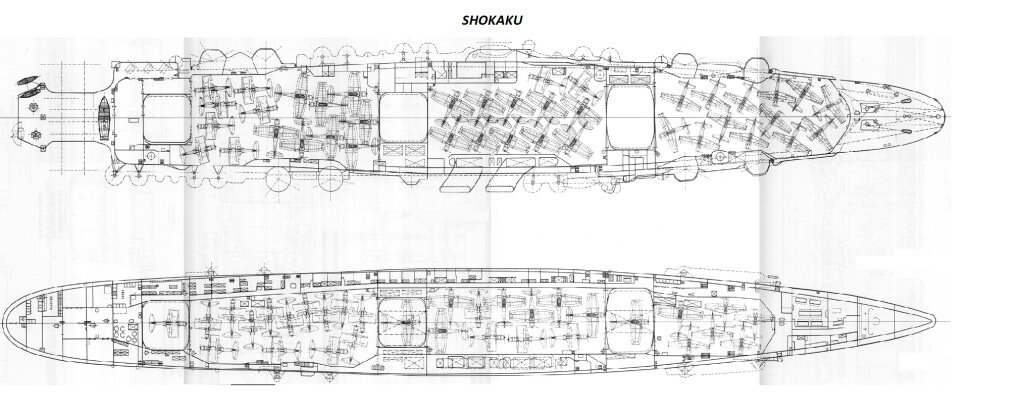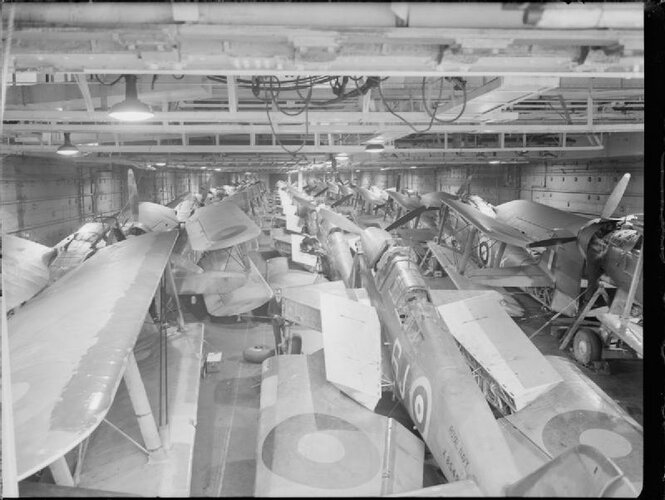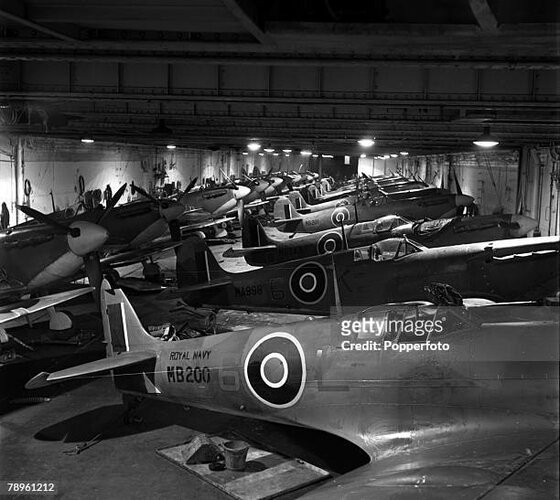Scott Kenny
ACCESS: Above Top Secret
- Joined
- 15 May 2023
- Messages
- 6,227
- Reaction score
- 5,081
The Forestall and Enterprise fires indicate that a single division of the hangar deck is not a significant threat to a carrier in the event of a fire.
There was a long discussion about the extent of Midway's armour including the hangar doors over on the NavWeaps forum two yeras ago that you might be interested in.The early configuration of the three Midway class CVs is unknown to me, but after her major 1966-70 modernization Midway had only two hangar bays, with one subdividing door.
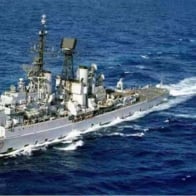
To summarise:I must have been completely ignorant to this detail up to now, but do i understand correctly that the US WW2 fleet carriers had a SINGLE level hangar, while most japanese and british carriers had double, superimposed hangars? Makes me wonder how the US carriers could carry so many planes, presumably deck parks playing a large part.
To summarise:
1. Bigger hangars
2. Permanent Deck park
3.Suspending planes from the ceiling
The Essex class CVs had three hangar bays, with two subdividing doors.
The early configuration of the three Midway class CVs is unknown to me, but after her major 1966-70 modernization Midway had only two hangar bays, with one subdividing door.
The Forrestal and Saratoga had three hangar bays, with two subdividing doors - likely due to their original axial flight deck configuration.
Ranger and Independence had only two hangar bays, with one subdividing door, and were designed from the start with an angled flight deck.
Kitty Hawk and Constellation had only two hangar bays, with one subdividing door.
I don't know if America and JFK had two or three hangar bays.
Enterprise had only two hangar bays, with one subdividing door.
CV-41 hangar deck plan official USN:
View attachment 706420
CV-60 Saratoga:
View attachment 706421
CV-62 Independence:
View attachment 706422
The armoured sides were not the reason for the RN generally warming up its aircraft on the flight deck. It was the fact they were a "closed" design, in common with previous RN carriers. Having said that I've come across one photo which clearly shows a Seafire having its engine run up in an RN hangar, so it was done.Its need to be also point out that the armor carriers like the Illustrious class also had Armor Side walls for their hangers. Which the USN was not impress at all with.
Which limited the amount of planes that could be ready at any one time due safety. Cause until jets became the norm, piston planes needed like a 15 minute warm up period.
And well, running engine, enclose space, you can see the issue.
And while the RN did try to use electric warmers to get around it, all I can find is complaining bout them...
Also the Armor sidewall was what really screwed up when a bomb penerated. They contain the explosion inside the ship and basically warped the ship structure. Which is bad and play part of the reason for the early scrapping of those carriers.
And the damage those hits caused the Illustrious and Formidable basically lamed the carriers to the point that if tge War ended the next day they been scrapped. Cause even if the RN greatest Enemy allowed it, they just couldn't be fix without building a new vessel.
I'm not sure how you'd balance "strength deck" with "blow off panels" with "armored deck" on a carrier...Open hangars did no better than closed in venting explosions. See the USS Enterprise damage report for what happened in May 1945. The flight deck was bent upwards by up to 3.5ft. Photos at end of Report.
USS Enterprise CV6 War History 1941 - 1945
CONFIDENTIAL U.S.S. Enterprise (CV6) War History 7 December, 1941 to 15 August, 1945 The Chief of Naval Operations directs that this report be shown only to those persons to whom the report would be of value in the performance of their duties. Steps shall be taken accordingly to insure that the...www.history.navy.mil
Yet that was what the Japanese did in the upper hangars of the unarmoured Shokaku class and the Armoured Taiho.I'm not sure how you'd balance "strength deck" with "blow off panels" with "armored deck" on a carrier...
Don't think that did them much good.Yet that was what the Japanese did in the upper hangars of the unarmoured Shokaku class and the Armoured Taiho.
You are partially right there was no warping. However in Formidable’s case (at least from what I’ve heard) by the end of her career her keel was Being held together by her flight deck.Again we have the nonsense about Illustrious and Formidable being "warped" by the bomb damage. It has been debunked many times. The problem is that very little is written of their post war service other than for thecreconstrufred Victorious. Illustrious was extensively refitted 1945/46 and served as the trials and training carrier until Feb 1955. Only Formidable saw no service after March 1947 and was poorly maintained. They were too costly to man in a post war world.
Problem is, that after 1947 very little seems to have been done to maintain her while she was in Reserve. When surveyed in 1949 her “poor condition” meant that she was passed over for reconstruction in favour of Victorious. But beyond that statement I’ve never come across any further explanation of her condition.You are partially right there was no warping. However in Formidable’s case (at least from what I’ve heard) by the end of her career her keel was Being held together by her flight deck.
I’ve definitely seen it somewhere I can’t find it thoughProblem is, that after 1947 very little seems to have been done to maintain her while she was in Reserve. When surveyed in 1949 her “poor condition” meant that she was passed over for reconstruction in favour of Victorious. But beyond that statement I’ve never come across any further explanation of her condition.
Do you have a source for what you’ve heard? Is it a primary source or merely heresay?
Given the various statements that have been made about her condition over the years I’m surprised that firm evidence of it has not been turned up over the last 70 or so years. All we seem to have is unsupported statements. I’d love to get something more conclusive.
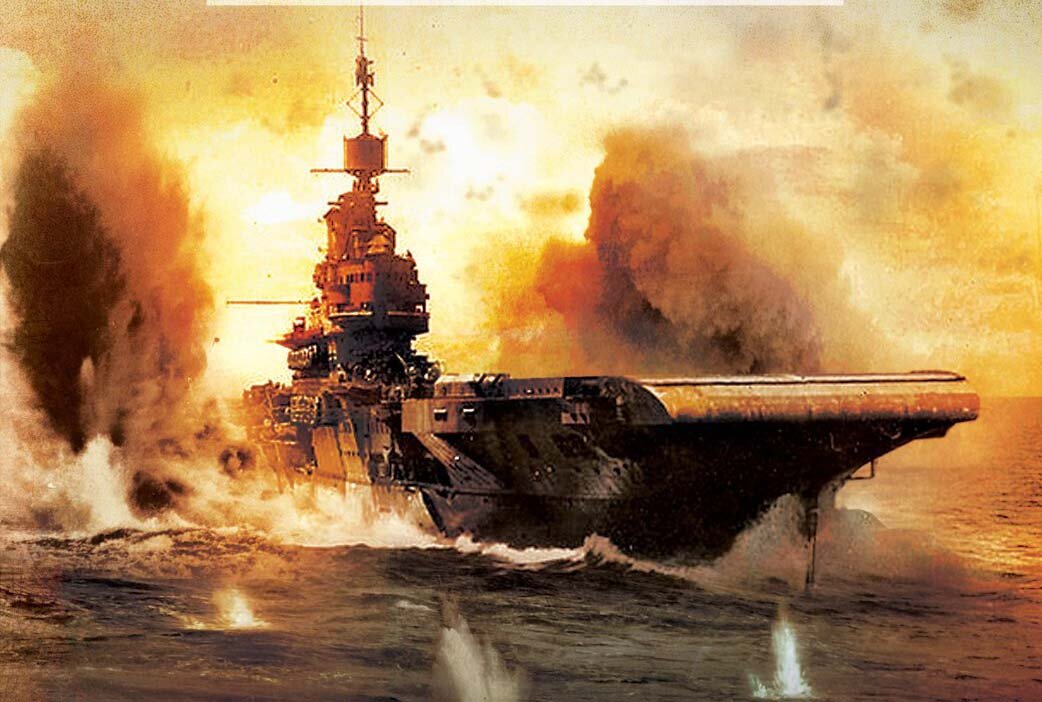
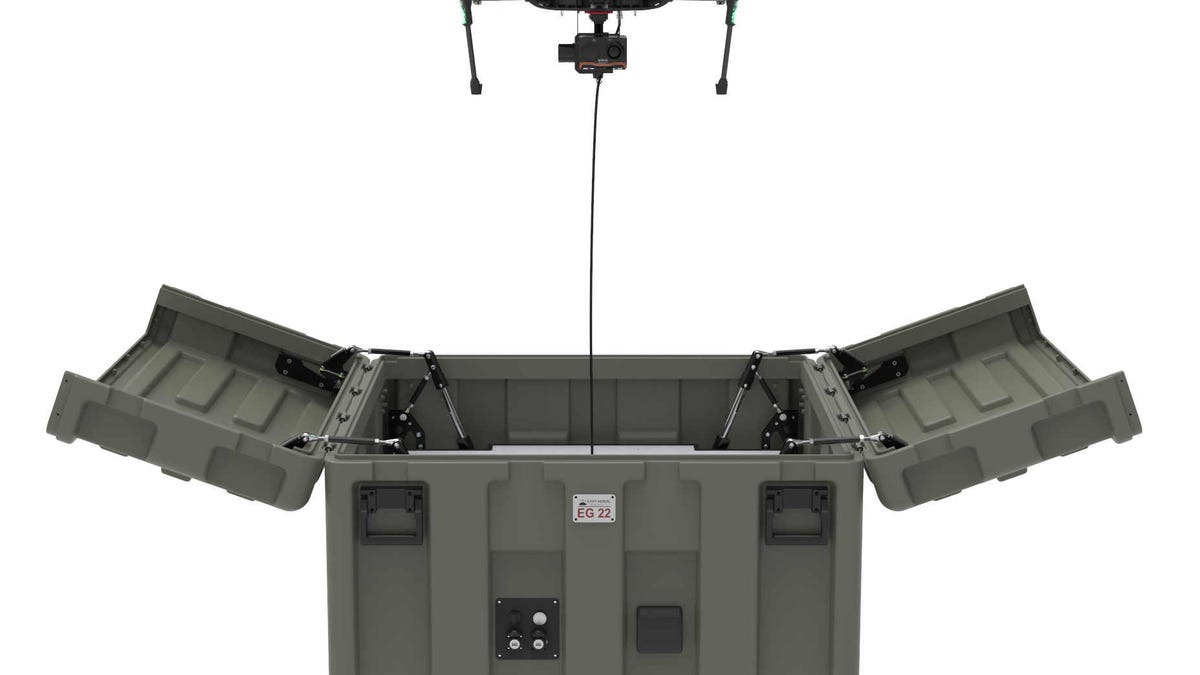
 www.zdnet.com
www.zdnet.com
This from Taiho vol1 by Lars Ahlberg & Hans LengererDon't think that did them much good.
The problem boils down to not being able to use the deck materials as part of the load-bearing structure, despite their fairly heavy thickness (if armored). I'd need to look up how thick a plate you need to support a 60klb or greater aircraft (for modern use), and how thick the blow off panels are on tanks.
Aircraft Carriers as they are are probably the most adaptable ships to unmanned aircraft. They already operate manned fixed and rotary-wing aircraft, it won't be all that much more difficult to have them launch unmanned fixed and rotary-wing aircraft. To get the best performing aircraft (manned or unmanned), it's better to take advantage of already existing capabilities on board the aircraft carrier.This whole notion of hangar deck catapults sounds like a great way to integrate drone warfare into modern ships. Instead of having to use a straight line at launch, maybe build a curve like a Nike whoosh symbol to fit more length in the catapult. May be able to integrate them crossbeam on a large ship like a carrier, rather than lengthwise, for pretty large throw-weights. Your eggs in one basket strategy may make carriers obsolete if they do not stay creative to keep them relevant. Loading and launching from internal space like that should be conducive to automation. You already removed the pilot, look for ways to simplify hangar crews, too.

Portable drone hangar gets military certification
The drone industry is increasingly targeting the security and defense sectors.www.zdnet.com
Automatic hangars came to smaller drones. Certainly would be more handy on larger ones.
The US planned to adopt hangar deck catapults from CV-4 Ranger. The theory was to allow a carrier to remain operational if it's flight deck was torn up by enemy bombs. They were not fitted to her as a cost saving measure. They were fitted from CV-5 to CV-8 plus the first 5 Essex class.
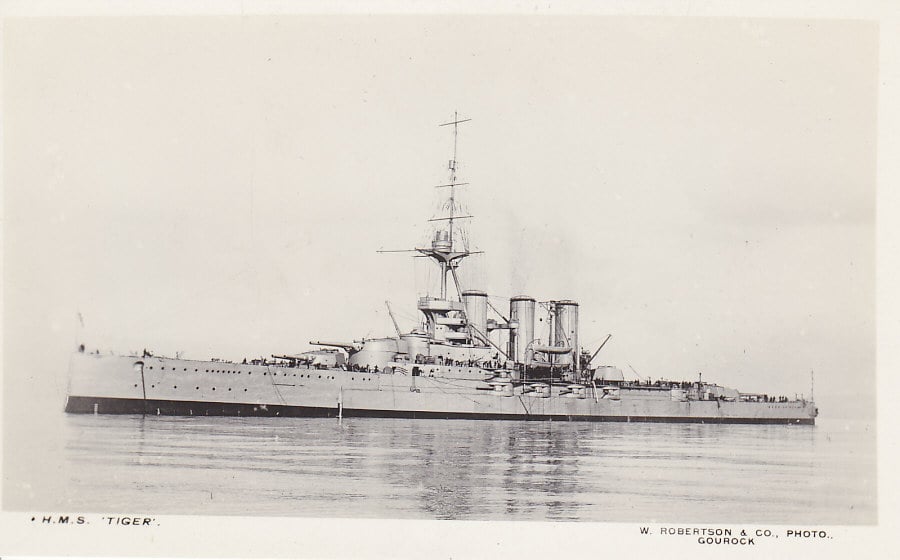
Depends on the size of the drones.Aircraft Carriers as they are are probably the most adaptable ships to unmanned aircraft. They already operate manned fixed and rotary-wing aircraft, it won't be all that much more difficult to have them launch unmanned fixed and rotary-wing aircraft. To get the best performing aircraft (manned or unmanned), it's better to take advantage of already existing capabilities on board the aircraft carrier.
Catapults within the hangar are going to impact on hangar flow, even if straight, and curved decks are going to add even more problems. Not to mention you're cutting even more holes in the side of the ship (unless you use those for the aircraft elevators), and the jet efflux from the aircraft you're launching needs to go somewhere.
Consumer electronic drones are irrelevant to this discussion, the aircraft that will be launched from carriers will have much more in common with existing combat aircraft, with similar, albeit lesser maintenance requirements.
You are partially right there was no warping. However in Formidable’s case (at least from what I’ve heard) by the end of her career her keel was Being held together by her flight deck.
Problem is, that after 1947 very little seems to have been done to maintain her while she was in Reserve. When surveyed in 1949 her “poor condition” meant that she was passed over for reconstruction in favour of Victorious. But beyond that statement I’ve never come across any further explanation of her condition.
Do you have a source for what you’ve heard? Is it a primary source or merely heresay?
Given the various statements that have been made about her condition over the years I’m surprised that firm evidence of it has not been turned up over the last 70 or so years. All we seem to have is unsupported statements. I’d love to get something more conclusive.
All ships suffer corrosion especially if not maintained properly in Reserve.I suspect that it might be rust... the RAN lost a planned Type 15 Frigate conversion over this, and it is possible that Formidable had a similar issue.
In 1943 the Royal Navy lent to the Royal Australian Navy the destroyers Quiberon & Quickmatch, and 1945 Quadrant, Quality, & Queenborough. After the end of the war, Quadrant and Quality were placed in reserve in Australia, while the RAN kept the other three in service.
They were transferred permanently in June 1950 when it was announced they would be converted to fast anti-submarine frigates similar to the British Type 15, the conversions being effected at Williamstown (Quadrant) and Cockatoo Island (all others) dockyards, but only four of the ships were reconstructed, with Quality serving as spares ship.
Quality commissioned into the RAN on 28 November 1945, and paid off into reserve on 25 January 1946. The destroyer was to be converted into an anti-submarine frigate: to facilitate this, Quality and her four sister ships were gifted to the RAN in May 1950.
Quality was designated as the last of the five ships to undergo the conversion. While waiting for conversion, the destroyer underwent refits in 1948 and 1950, and had to be docked for repairs to her hull in 1954. On 14 August 1956, one of the reserve fleet shipkeepers noticed that Quality was sitting lower in the water than normal. It was discovered that the hull had become corroded at the waterline, with the ship taking on water. Quality underwent an emergency dry docking that day at Garden Island, with the superstructure cut off to increase the ship's freeboard.
The deterioration of the ship while waiting for modernisation, combined with post-War reductions in RAN personnel numbers, the increases in both time and cost for the other four Q class conversions, and the need for the RAN to cut back spending in order to support the navy's new aircraft carriers, meant that the conversion of Quality was cancelled and the ship was marked for disposal. Quality was sold for scrap to the Mitsubishi Company of Japan on 10 April 1958 for breaking up as scrap.
Thanks for the comprehensive reply.For the Unryu class air group see the article in Warship 2010 on the class. He gives the following (figures in brackets are Reserve aircraft):-
As designed:-
12 (+3) Zero fighters
27 (+3) Val dive bombers
18 (+2) Kate TB
Total 57(+8) aircraft.
He then continues “ Because the volume of the hangars was too small to accommodate this number, eleven planes were to be carried permanently on the flight deck, a practice the IJN did not adopt until 1943. However as new types of aircraft were developed plans were modified, and the final air complement was to be:
18(+2) Reppu fighters (Allied code-name ‘Sam’)
27(+0) Suisei dive bombers (‘Judy’j
6(+0) Saiun reconnaissance planes (‘Myrt’j
making a total of 51 (+2) aircraft, of which the Myrts were to be carried on the flight deck.”
BUT as the Sam & Myrt were not ready for service their temporary equipment was to be
27(+0) Zero fighters
9(+0) Judy dive bombers
3(+0) Judy recce aircraft
9(+0) Tenzan (Jill) torpedo bombers.
Total 48 aircraft.
But none of these was ever carried as none of these carriers never reached the stage of being operational carriers.
As for comparison with Soryu & Hiryu, their flight deck flight deck and hangar layouts were different. The Older pair had 3 lifts, the Unryus had 2 larger lifts which affects the hangar floor space. I can’t find my book on the older pair just now.
I have a plan for Shokaku showing hangar layouts with aircraft. These show
Lower hangar:-
18x Kate TB (including one in the after lift we’ll)
9x Val DB (including 1 in each of the forward and midships lift wells)
5xZero
Upper hangar:-
9xKate TB
18xVal DB
13xZero
So 27 Kate, 27 Val & 18 Zero, total 72 which corresponds with her original air group EXCEPT it makes no provision for the 5,5,2 Reserve aircraft to be carried in the hangar. BUT the latter were to be partially disassembled, probably in the hangar overhead.
This air group was less than when the initial requirement was drafted when it was 96. In the interim new types introduced were larger than the types they were replacing. The same thing was also happening with both British and US carriers in the late 1930s.
When you see the hangar layouts for Japanese carriers the aircraft are much more intertwined than on RN & USN ships. That must have made extracting a particular airframe much more difficult. So I could see a situation where aircraft might be left on deck from time to time. Not really a deck park as such. And during operations the Japanese did refuel and rearm aircraft on the flight deck between missions.
In late 1943 the organisation of Japanese air groups changed after which an air group was attached to a carrier group. So the 601st Kokutai, organised in mid-Dec 1943 was posted to the 1st Carrier Division comprising Taiho, Shokaku & Zuikaku. It theoretically had 81 Zero, 72/9 Judy/Val DB, 54 Jill TB and 9 recce aircraft. So each carrier had a complement of 27 Zero, 24 Judy DB, 3 Val DB, 18 Jill TB and 3 Judy recce aircraft for a total of 75 on each carrier, in theory.
Elsewhere the strength of the 601st Kokutai is given as 214 aircraft:-
91 Zero
9 Val
70 Judy
44 Jill
The strength of the Taiho air group on 13 & 19 June 1944 were as follows
22 / 19 Zero
22 / 20 Judy incl 4 recce aircraft
3 / 1 Val
18 / 16 Jill
Total 65 / 56
These represented losses in deck landing accidents as well as search plane losses and a fighter which landed on Junyo.
So lots of things to consider in determining just how many aircraft could be fitted into any hangar.
